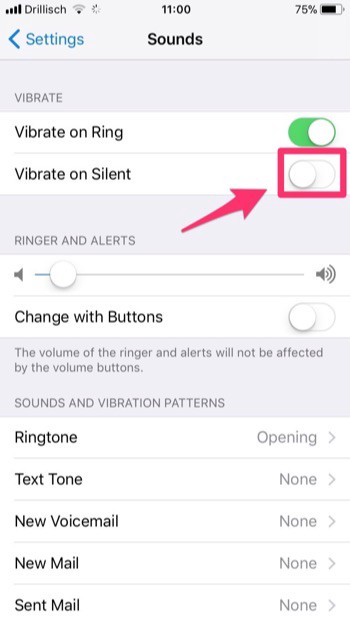by Niklas Göke, 21 March 2019
In an article titled Do Not Disturb: How I Ditched My Phone and Unbroke My Brain, tech columnist Kevin Roose describes how smartphone addiction feels:
I found myself incapable of reading books, watching full-length movies or having long uninterrupted conversations. Social media made me angry and anxious, and even the digital spaces I once found soothing weren’t helping.
Quoting the article, Youtube star Casey Neistat admits to spending nearly two hours a day on Twitter and Instagram alone. He, too, wants to quit.
“A significant amount of my day is spent on that mindless scrolling. And that’s just the time part, forget about the health implications of it. […] There’s just no way that’s making me a better person, or a better father, or better anything.”
If you ask Cal Newport, author of Digital Minimalism, Neistat is on to something. Newport’s readers claimed they were exhausted not from any one app, but from losing control over the collective impact they had on their lives.
Few want to spend so much time online, but these tools have a way of cultivating behavioral addictions. The urge to check Twitter or refresh Reddit becomes a nervous twitch that shatters uninterrupted time into shards too small to support the presence necessary for an intentional life.
While the conversation around our smartphones’ addictive properties isn’t new, clearly, it hasn’t been loud enough. Or practical enough. Because the demand for remedies is off the charts. Neistat’s video got 2,000,000 views in a week. Roose’s article has 220,000 shares. Newport’s book was an instant New York Times bestseller. And those three are just items of the past 30 days.
As important as this conversation is, I’m baffled by how helpless it makes us appear. After all, it’s a device in our hands, not the other way around. We’re in control here. In fact, you can escape your phone’s toxic grasp in the next five minutes. All it takes is changing the settings and modifying your environment.
Step 1: Don’t Give Up Before You Start
Some of what I’m going to suggest, like silencing your phone at all times, is going to sound extreme. You’ll see it’s really not, but only if you question your gut reaction to this idea. That reaction will be something like “I can’t do this in my line of work,” “I need to be reachable at all times,” or “I’ll miss something important,” but it’s probably not true. So don’t let it go unchallenged.
Step 2: Change The Default
In his book Nudge, behavioral economist and Nobel laureate Richard Thaler shares a fascinating study that shows the power of the default. In Austria, 99% of people are organ donors. In Germany, that number is just 12%. Why? Germany has an opt-in system. You have to fill in a little card and carry it in your wallet. But that takes effort, so most people never do it. Austria has an opt-out system. You’re a donor by default, and most people never change it.
Humans are lazy. We’ll only change the status quo if it really, really matters. Usually, it doesn’t. So we don’t. If your phone is silent by default, you’ll find yourself changing that state much less frequently than you think you will.
On your iPhone, go to ‘Settings,’ then ‘Sounds,’ then uncheck the ‘Vibrate on Silent’ option. Now, whenever you push the little knob on the side of your phone, it won’t just mute calls and notifications, but stay silent as a rock.

This works the same on Android. With this setup, your alarms will still sound. I only ever change this when it makes sense to be interruptible, for example if I expect an important call or am out with friends and we might lose each other.
Step 3: Make Yourself Take One Extra Step
Now that your phone won’t make you aware it exists all the time, there’s less reason for you to pick it up. But you also want to be more mindful when you do. I’ve written an extensive guide about this, but the underlying principle is: Put one more step between you and your phone’s every option.
Instead of the screen lighting up when you pick it up, make yourself press a button (disable ‘Raise to Wake’). Instead of notifications showing up on your home screen, move all of them to the Notification Center. This way, you’ll have to unlock and swipe to see them. Instead of accessing social media via their own apps, delete them and make yourself go through the browser. Instead of keeping any apps on your home screen, move them to the following pages. So you’ll think about which one to use. A wallpaper with a good prompt helps.
Of course, this applies to breaking the default too: make it harder to pick up your phone. The easiest way to do that is to hide it from view. Put it in your backpack, leave it in a locker, or simply tuck it behind your laptop’s screen. Since it’s silent now, removing the visual cue is often enough to not grab it.
Describing his book, Newport notes: Digital minimalists are all around us. They’re the calm, happy people who can hold long conversations without furtive glances at their phones. They can get lost in a good book, a woodworking project, or a leisurely morning run. They can have fun with friends and family without the obsessive urge to document the experience. They stay informed about the news of the day, but don’t feel overwhelmed by it. They don’t experience “fear of missing out” because they already know which activities provide them with meaning and satisfaction.
There used to be a time when people exhibiting these behaviors didn’t need a term to describe them. They were just people. People, like Casey Neistat on his one-week social media detox when his second daughter was born: “I wasn’t happier, but it did feel like a burden was lifted off of me. Like a weight, a heavy blanket that I shoulder every day. It wasn’t there. My brain had to focus on fewer things. So I could appreciate the things that are amazing about life.”
It seems we’ve deviated so far from this standard that the people meeting it appear as a different species, but they’re not. Instead of helping us remember this fact, articles titled I Used to Be a Human Being often just add to our state of perceived helplessness.
After his own 30-day treatment program, Roose says: It’s not a full recovery, and I’ll have to stay vigilant. But for the first time in a long time, I’m starting to feel like a human again.
Despite what it feels like, I’d like to remind Mr. Roose and those with similar thoughts that we’re all humans all the time. And we can do the things that make us special at any moment. Like taking control over our phones. Whether you’re human is never in question. Will you take responsibility for it?
